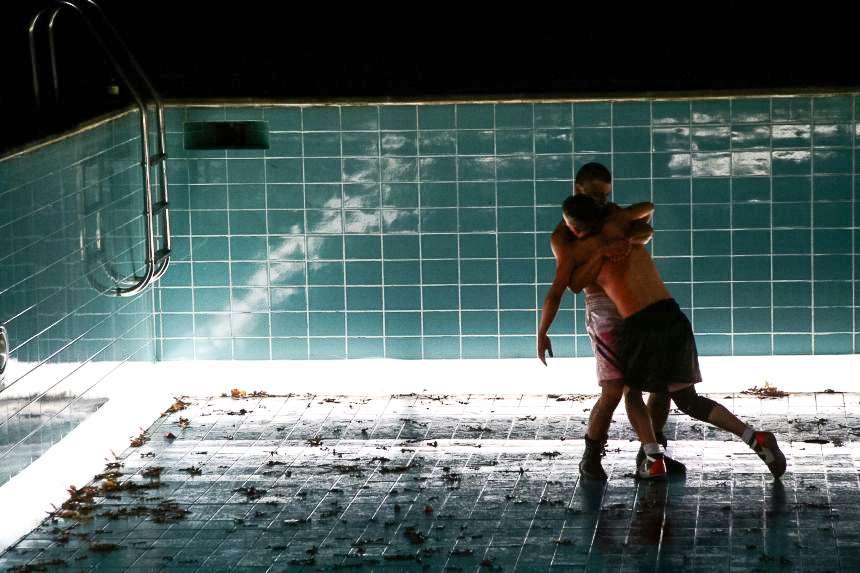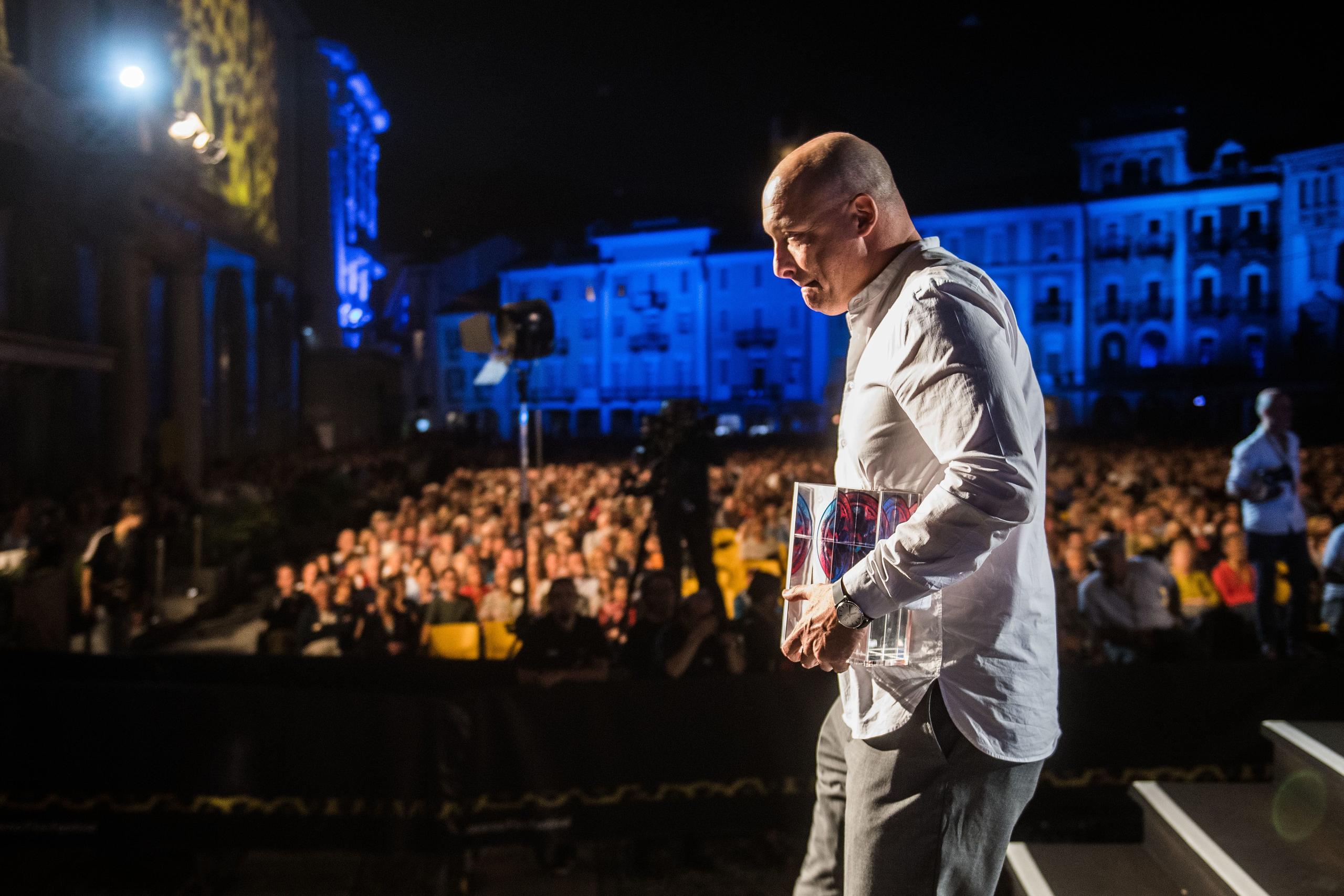The Swiss take on blood, sweat and boxing

A Swiss-made boxing movie? It sounds like an oxymoron, but thanks to Luganese filmmaker Fulvio Bernasconi, there is at least one record of such a film: the gritty, high-octane "Fuori Dalle Corde" (Out of Bounds, 2007). Sean Nam, a New Yorker specialist in boxing movies and a member of this year's Critics Academy, contextualizes Bernasconi's work in the long tradition of punching fists hitting the screen.
“Fuori Dalle Corde” had a screening on Thursday afternoon at the 72nd Locarno Film Festival – on a sumptuous 35mm print loaned from the Swiss Cinemathèque, no less – as part of a tribute to Bernasconi, who was feted earlier in the week with the Premio Cinema Ticino, the festival’s biannual honor given to a filmmaker of distinction with Ticino roots. Bernasconi, clad in white, was present for the screening and offered a few words of appreciation in a brief introduction. Then he promptly left. Perhaps he was wary of catching blood on his shirt as Fuori Dalle Corde unspooled on the screen. (Yes, it is that violent).

The film is about a tempestuous Italian boxer, Mike, who hails from the iconic Adriatic port city of Trieste where the literary ghosts of Italo Svevo, James Joyce, Umberto Saba, and Rainer Maria Rilke still linger restlessly in the air today. But perhaps these are the wrong references to make for a film that is unabashed in its depiction of blood and brutality. It is a boxing film, after all, and the Trieste that appears in the film has little to do with the haunted grounds of yore, with its cafe and auburn-lit facades.
Instead, it takes place in the cold, dilapidated shipyards, where empty shipping containers sit abandoned and hard-boiled deals go down. A more fitting reference, then, might be Elia Kazan’s “On The Waterfront”, in which Marlon Brando’s Terry Malloy, an ex-boxer-turned-longshoreman finds himself uttering the famous lament, “I could’a been a contender. I could’a been somebody, instead of a bum, which is what I am, let’s face it.”
The code of über-masculinity
In Fuori Dalle Corde, Mike is not a has-been boxer. No yet, at least. Though he is penniless, he is young and still in his physical prime. Most of all, he harbours aspirations to become a world champion.
His younger sister Anna, who toils long, freezing hours at the fish market, has made it her life’s mission to support her brother in such a dangerous trade. In a deft re-working of the typical boxing subplot, Bernasconi replaces the love interest with sibling affection. Mike, like so many screen boxers before him, adhere to a code of uber-masculinity, a delicate facade which begins to show cracks later on.

Things begin to go awry for Mike when he gets the bad end of a decision against an undistinguished opponent in Hamburg, Germany, where Mike is building his professional career. Pugilism, hardly an economic force in most European countries, still commands a decent market in Germany, where big fights and even bigger paydays can be issued to foreign boxers — just ask Ukrainian heavyweight Wladimir KlitschkoExternal link.
Gutted emotionally, Mike heads back home, but not before a shady, long-haired fixer shows up to offer Mike an opportunity to fight for money in an alternative combat sport pursuit, where Muay Thai and kickboxing intermingle. Mike declines on the spot.
At the urging of Anna, Mike snaps out of the doldrums and whips himself back into fighting shape with a local trainer. But before long Mike is informed that his promoter released him from his fight contract, leaving him, essentially, jobless. More bad news arrives when the debt collectors show up at Anna’s house and begin hauling furniture away.
Desperate, Mike turns to the fixer he once spurned and offers his services. From here, Mike enters an illicit underworld (as if the world of boxing wasn’t already one) where anything goes: elbows, teeth, kicks, and even death, as crowds of champagne-swilling glitterati look on. It is human cockfighting, in essence, and Mike soon finds himself in moral free-fall as well. Boxing, in comparison, almost sounds cute. At some point in his hellish escapade, Mike must decide whether punching people for pay is a suitable answer to his problems.
Lousy boxing, ultimate fighting
Technically speaking, the gruesome fights that Mike subsequently participates in – inside empty swimming pools, grisly basements, and in the hinterlands – are not examples of boxing, if boxing is believed to be sport with its own strict rules, rituals, and procedures: 12 three-minute rounds, gloves, referee, a ring, and of course, the use of only one’s fists. Rather, the fights that Mike engages in bear more resemblance to the world of bare-knuckle boxing or Mixed-Martial-Arts.
There are some off-putting moments, too, though they may not bother anyone other than the rare spectator who happens to be a boxing aficionado. Michele Venitucci, who plays Mike, simply can’t fight. In one scene, Mike is shadowboxing before a fight with such clumsy form that it invites ridicule, detracting from the film’s serious, single-minded tone. Indeed, the extras hitting the heavy-bag at the gym seem to have a better grasp of what distinguishes a jab from a right cross.
But the merits of a good boxing film do not rest on the skill set of its actors. After all, the chief reason why boxing, a marginalized sport today, continues to be featured in big-budget features — in the past few years alone, there have been been two Creed installments and star-powered biopics of Roberto DuranExternal link (“Hands of Stone”) and Vinny PazienzaExternal link (“Bleed for This”) — has everything to do with its appeal as the ultimate vehicle for dramatizing the plight of the no-hoper.
In this, Bernasconi has produced an underdog story that both hews toward and subverts the conventions of the genre. Nowhere is the latter made more clear than in the film’s florid ending, in which Bernasconi refuses to bring together the various strands of his story; instead, he leaves them hanging, like a bunch of detached wires. One senses a lost opportunity. Or perhaps for this bleak film, there could be no better possible outcome.
Sean Nam’s pick of top 10 Boxing films (in no particular order):
The Set-Up (Robert Wise, 1949)
Fat City (John Huston, 1972)
The Greatest (William Klein, 1969)
Body and Soul (Robert Rossen, 1947)
Gentleman Jim (Raoul Walsh, 1942)
The Boxer and Death (Peter Solan, 1962)
Belarmino (Fernando Lopes, 1964)
Jose Torres (Hiroshi Teshigahara, 1959)
Kids Return (Takeshi Kitano, 1996)
Boxing Gym (Frederick Wiseman, 2010)

In compliance with the JTI standards
More: SWI swissinfo.ch certified by the Journalism Trust Initiative
You can find an overview of ongoing debates with our journalists here. Please join us!
If you want to start a conversation about a topic raised in this article or want to report factual errors, email us at english@swissinfo.ch.